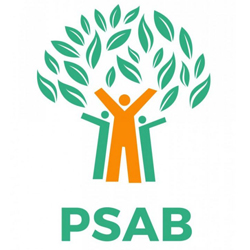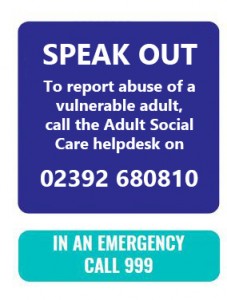Let’s Start Talking – Taking The Lead on Safeguarding in Your Organisation
Creating a safer organisational culture is vital in promoting the wellbeing of staff, volunteers and the people they support. It is important that organisations create environments where everyone is confident their concerns are welcomed, listened to and addressed appropriately. Organisations should encourage continuous learning and reflection and lead with positive actions and values to ensure people have the confidence to challenge and instigate change.
On this day, we want to encourage people to reflect on the culture in their organisation. What is working well in terms of promoting the wellbeing of people within the organisation. Or, what could be improved?
Safer Recruitment Guidance
The four Local Safeguarding Adult Boards in Hampshire, Isle of Wight, Portsmouth and Southampton (4LSAB) have produced shared multi-agency guidance on Safer Recruitment to support agencies to check their recruitment process is robust and safe.
4LSAB Safer Recruitment Guidance (June 2023)
What do we mean by Safer Cultures?
Promoting safer cultures is all about how organisations and individuals can take steps to minimise harm occurring in the first instance, whilst simultaneously ensuring correct policies and procedures are in place so that safeguarding concerns that are raised, are recognised and responded to effectively.
What do Safer Cultures Look Like?
Listening – organisations should listen to members and create an environment where people’s concerns are listened to and addressed appropriately (be that service users, participants, volunteers or employees). Individuals should feel confident about how to respond to, report and refer any safeguarding concerns either within their organisation or community.
Leading – organisations should ensure they have the correct policies and procedures in place to minimise the risk of harm and to respond effectively should concerns be raised. This could include having a detailed safeguarding policy and ensuring that staff and volunteers receive regular safeguarding training.
Learning – it is important that organisations, and individuals within them, take the time to learn from safeguarding incidents and reflect on what actions could be altered in the future to facilitate best practice and minimise the risk of harm.
Creating Safer Organisational Cultures
A range of resources from the Ann Craft Trust to help organisations work towards improving their cultures.
Creating Safer Organisational Cultures – Ann Craft Trust
The National Council for Voluntary Organisations
If your organisation works with children or adults at risk, the Charity Commission expects your organisation to have a safeguarding lead. This is generally the individual who would respond to concerns about a child or adult at risk and ensure referral to statutory services.
Who can be designated safeguarding lead (DSL)?
The designated safeguarding lead should:
- be someone with resources and capacity to act
- not be the most senior person in the organisation
- be one person with overall responsibility
- be available when the organisation is active.
What does the role include? | NCVO
In some organisations the DSL will be a member of the senior management team, reporting directly to the chief executive. They must have the resources and capacity to act and to influence others.
Who can be designated safeguarding lead? | NCVO
4LSAB Safer Recruitment Guidance (June 2023)
Other Services Available
Able Futures helps people aged 16+ manage their mental health at work. They can provide nine months mental health specialist advice and guidance or work with employers to make adjustments to help your mental health at work. Call Able Futures free 0800 321 3137 from 8am to 10:30pm, Monday to Friday.
Wellness Action Plans provide individual guides for employees, line managers and people working from home.
How to support mental health at work – A guide from the Mental Health Foundation.

